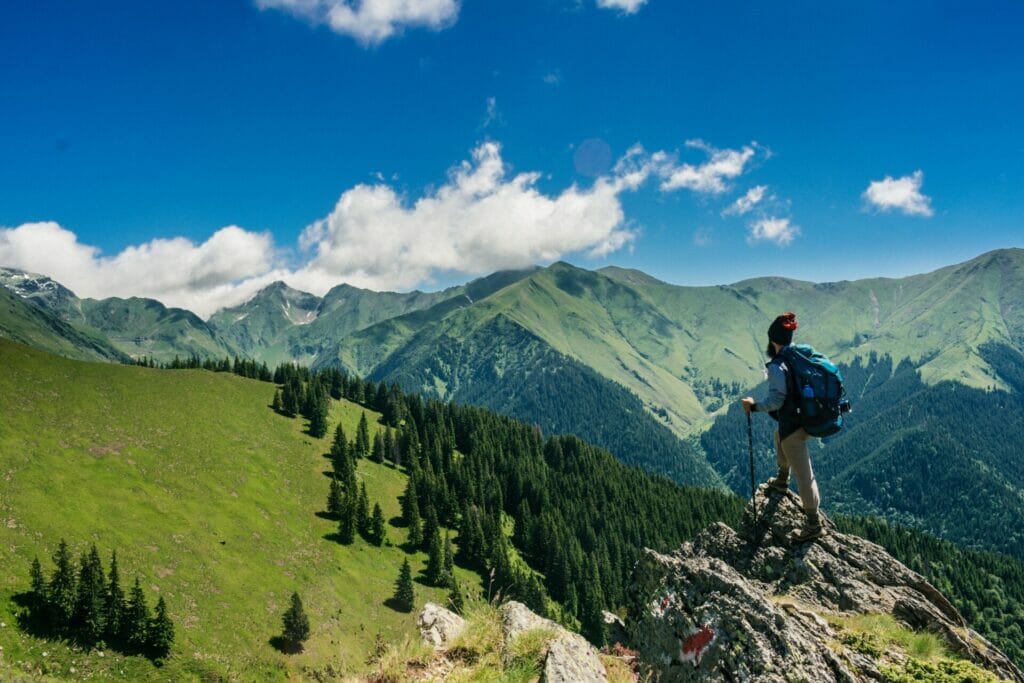3 Major Negative Effects of Hiking On The Environment
Are there any negative effects of hiking that we, as hikers, should be concerned about? As a hiker, I want to address some genuine reasons for how hiking affects our environment without diving into intricate scientific theories like trail erosion, soil degradation, and habitat destruction and fragmentation.
While these scientific explanations are undoubtedly crucial, so today I will highlight some real issues that are directly affecting our ecosystem.

I believe it’s equally important to highlight the tangible and relatable aspects of hiking’s impact on the natural world that might resonate with all hikers, novice or seasoned.
Are Self Inflating Sleeping Pads Comfortable For Hiking : What is The Truth?
Negative Effects of Hiking On The Environment
With increasing foot traffic on trails and a growing number of outdoor enthusiasts, it becomes imperative to examine the potential ecological implications of our adventures.
Pollution from hiker waste and litter is a pressing environmental concern that often goes unnoticed amidst the allure of nature’s beauty. As hikers, we must confront the reality that our actions inadvertently contribute to the degradation of the very landscapes we hold dear.
Plastic bottles, food wrappers, and other discarded items may seem insignificant on their own, but when multiplied by the thousands of hikers visiting popular trails, they accumulate into a serious environmental issue. Not only does this litter mar the natural beauty of the surroundings, but it also poses grave threats to wildlife.
Wildlife
Wildlife, curious by nature, may mistake our waste for food, leading to the ingestion of harmful materials that can disrupt their digestive systems and cause severe health problems.
Animals become entangled in discarded fishing lines, plastic bags, or other debris, resulting in injuries or even death. Such incidents disrupt the delicate balance of ecosystems, and the loss of certain species can have cascading effects on the entire food web.

As hikers, it is our collective responsibility to address this issue head-on. By adopting simple yet impactful practices, such as packing out all trash, following Leave No Trace principles, and participating in organized trail clean-up events, we can make a difference.
Proper waste management is essential to preserving the pristine beauty of our natural spaces and safeguarding the health and well-being of the ecosystems we explore.
Water Pollution
Water pollution from hiker activities is a significant environmental concern that has far-reaching consequences for both the ecosystems and the communities that rely on clean water sources. As we set out on our hiking adventures, we must be conscious of how our actions can impact the quality of nearby water bodies, such as rivers, streams, and lakes.

Improper Disposal Of Litter
One of the primary contributors to water pollution from hiker activities is the improper disposal of waste and litter. When hikers leave trash, such as plastic bottles, food wrappers, or hygiene products, near water sources, rain and snowmelt can carry these pollutants into the water, leading to contamination. The presence of plastic debris also poses a threat to aquatic life, as it may be mistaken for food or cause physical harm.
What To Bring On A Hike Date : Here Is The Perfect Solution
Cleaning Agent
Another source of water pollution is the use of soap and other cleaning agents in natural water bodies. While the intention may be to keep ourselves and our gear clean, the chemicals in these products can harm aquatic organisms and disrupt the delicate balance of aquatic ecosystems.
Hikers should always use biodegradable and eco-friendly soap away from water sources or use no-rinse alternatives to minimize their impact.
Human Waste
Human waste is another factor contributing to water pollution in wildland areas. When hikers do not properly bury their waste or use designated facilities, pathogens from human feces can contaminate nearby water sources, making them unsafe for drinking and recreational use.
By being mindful of the potential consequences of our actions and striving to minimize our footprint, hikers can play a significant role in protecting water sources and ensuring the continued health and vitality of aquatic ecosystems. Ultimately, the preservation of clean water is crucial not only for the well-being of the natural world but also for the enjoyment and sustenance of all living beings, including ourselves.
Our actions have a tangible effect on wildlife, habitats, water bodies, and the overall ecological balance. Awareness and education are vital in promoting responsible hiking practices and fostering a deeper connection with the natural world.
Wildfires
Although to date we have not listened or noticed any big mishaps like wildfires caused by hiking still it is a concerning issue that is important to discuss the negative effects of hiking.
The increased risk of wildfires due to human activity has become a growing concern for our environment and the safety of communities living in and around fire-prone areas. While wildfires have been a natural part of many ecosystems’ evolution, human actions have intensified the frequency and severity of these destructive events.

As hikers, it’s crucial to be aware of the role our activities can play in exacerbating this risk. One significant factor contributing to the heightened risk of wildfires is the presence of hikers and outdoor enthusiasts in wildland areas.
Campfires
Campfires left unattended or not correctly extinguished can easily spark wildfires, especially during dry and windy conditions. Even the smallest embers can quickly ignite dry vegetation, leading to uncontrollable infernos that ravage vast landscapes and endanger lives.
Off-trail hiking
Moreover, off-trail hiking and exploration, while alluring in the quest for adventure, inadvertently increase the likelihood of wildfire ignition. Venturing into areas not designated for hiking leads to accidental encounters with flammable materials, such as dry grass, twigs, or even discarded cigarette butts.
The combination of human presence in these sensitive environments and the potential ignition sources significantly heightens the risk of wildfires. As hikers, we must embrace our role as stewards of the environment.
What Color Bandana Is Safe To Wear For Hiking : Simple & Logical Answer
Understanding and adhering to fire safety guidelines, respecting fire bans during periods of high fire danger, and reporting any signs of potential wildfire ignition are essential actions we can take to mitigate the risk.
Equipping ourselves with knowledge about the local fire regulations and prevention measures is crucial for preserving the beauty of our wildlands and safeguarding the well-being of both nature and communities at risk.
FAQs
As a responsible hiker, I’ll address some of the common questions asked by beginners.
What are the specific ways in which hiking contributes to soil erosion and degradation?
Hiking traffic leads to trail erosion, especially on steep slopes. Proper trail design and using durable surfaces help reduce erosion and preserve soil integrity.
What are the best practices for waste management and litter control on hiking trails?
Pack out all trash, use designated waste disposal areas, and practice Leave No Trace principles to keep hiking trails clean and litter-free.
How can hikers avoid disturbing nesting and breeding areas for birds and wildlife?
Staying on marked trails and respecting wildlife boundaries help minimize disturbances to nesting and breeding areas.
What are the long-term consequences of soil compaction and its impact on vegetation?
Soil compaction leads to reduced water infiltration, hindering plant growth. Staying on designated trails helps prevent soil compaction and its negative effects.
What are some examples of successful conservation efforts in popular hiking destinations?
Examples include re-vegetation projects, trail restoration, and wildlife protection programs implemented by local authorities and conservation groups.
What are the most significant challenges in managing the environmental impact of hiking?
Balancing the growing popularity of hiking with environmental preservation is a significant challenge. Proper management and education are vital in addressing this issue.


